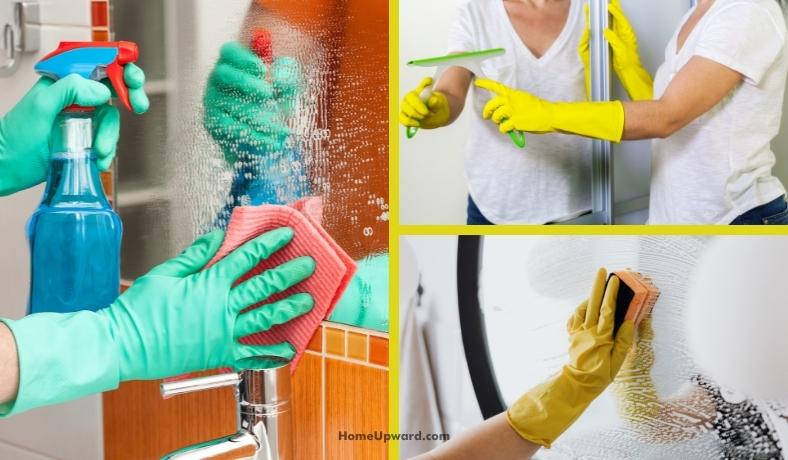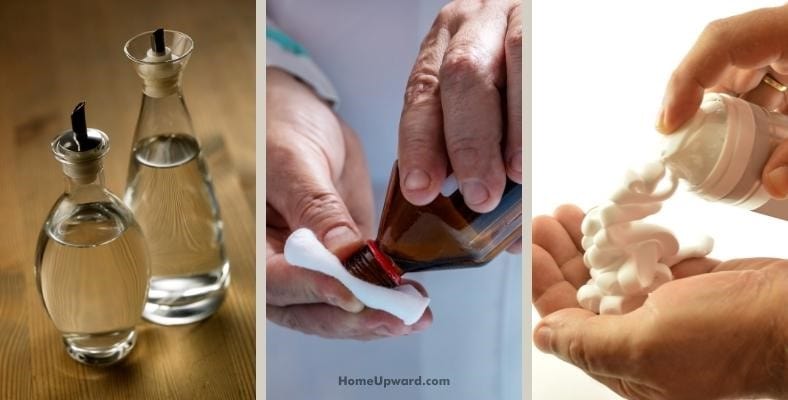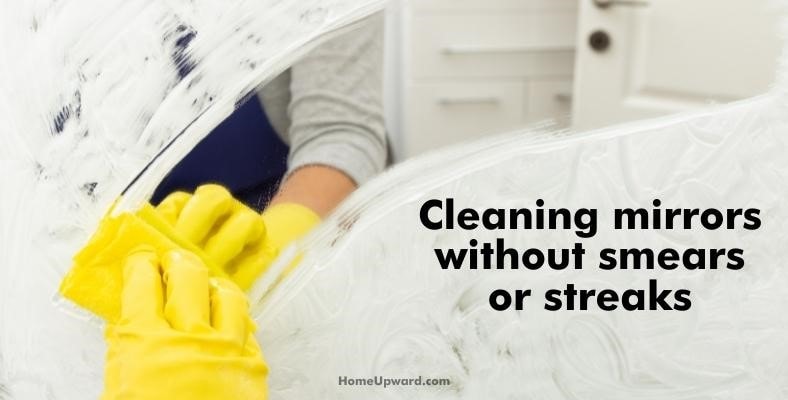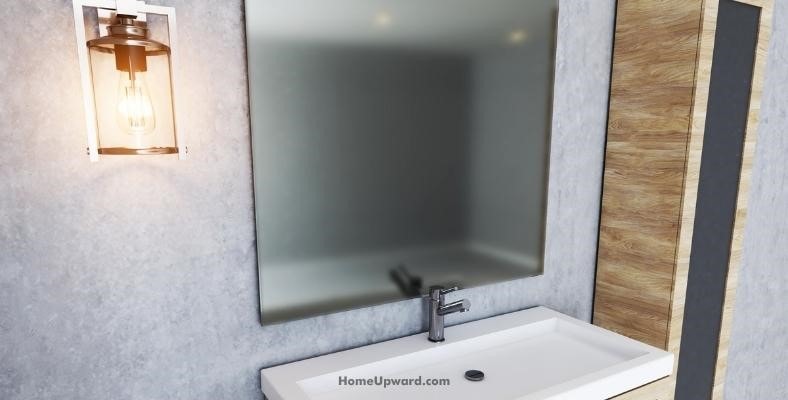Contents
How Do You Clean a Mirror Without Windex?
If you thought learning how to clean a mirror without Windex would present you with limited choices, you’re in for a surprise. There are several Windex-free mirror cleaning methods that are easy and use everyday household essentials.
1. Using a Vinegar Solution
Vinegar is a known antibacterial, making for an excellent glass cleaner solution for your mirror. To prepare this cleaner, mix one-part white vinegar with four parts water. Put the mixture into a spray bottle and coat your mirror in a generous layer.
2. Liquid Dish Soap
Liquid dish soap is another excellent homemade glass cleaner. The ratio of soap to water is less critical for a clean mirror—simply squeeze a few drops of dish soap into a bucket of warm water. Mix the solution well and apply it to your mirror using a sponge or cloth.
3. Rubbing Alcohol
If sticky debris like hair spray and toothpaste prevents you from having clean glass, try applying rubbing alcohol. You don’t need to dilute it before use—squeeze some onto a towel or cotton ball and scrub away. Keep the lid on your rubbing alcohol bottle between use since its low boiling temperature causes it to evaporate fast.
4. Clean Water
Sometimes, all it takes is a little distilled water to get a clean glass surface. But first, I recommend wiping down your mirror with a microfiber cloth to remove dust and debris. Then, wet the cloth, squeeze out excess water, and wipe your mirror from top to bottom for a fast and free mirror cleaner.
5. Dryer Sheets
Dryer sheets make for an excellent mirror and widow cleaner if they have a lot of dust. Simply take a new or used dryer sheet and wipe it over the glass. For an added punch, you can spray it with distilled water.
6. Shave Cream
Shaving cream is ideal for bathroom mirrors after your shower since it prevents steam marks from forming. All it takes is a little squirt of shaving cream on the glass and a soft cloth to rub it in. Finish by removing excess cream with a cloth.
7. Toothpaste
Toothpaste might not seem like an intuitive cleaning solution since it’s the very thing you could be trying to remove from your mirror. However, it can help remove fingerprint smears and, like shaving cream, prevent your mirror from fogging.
How Do You Clean a Mirror Naturally With a Homemade Cleaner?
For a powerful natural homemade mirror cleaner, mix the following ingredients:
- ⅓ cup white vinegar
- ½ cup rubbing alcohol
- Essential oils or lemon
- Distilled water to your preference
Essential oils will serve primarily to make your mirror smell good. Lemon will do this, but it’s also an antibacterial fruit.
Can You Use Clorox Wipes on Mirrors?
If you’re wondering how to clean a mirror without Windex while also disinfecting, Clorox wipes can do the trick. They’re excellent at scrubbing away and cleaning areas of your mirror that have toothpaste, soap residue, and other unidentifiable grime.
If you notice Clorox wipes leaving streaks on your mirror, simply give the glass a rub-down with one of the materials we’ll be talking about next.
What Are the Best Cloth and Cleaner Types to Clean Mirrors?
You don’t have to run out to the store to purchase a fancy cleaning cloth. Below are some excellent choices to get your mirrors squeaky clean.
Sponge
Sponges are a great material for cleaning mirrors since they have scratch-free surfaces. Furthermore, they’re excellent at whisking away dust and debris.
Newspapers
If you don’t have another cleaning material on hand, using the newspapers lying around your house is a suitable solution. They can help give your glass a more polished look, but you’ll need to use them with care; the paper breaks down when wet, and the ink can smear onto the mirror.
Squeegee
Who doesn’t want a streak-free mirror? A squeegee can help you get there faster than most cleaning materials here. That’s because it does an excellent job of removing the tiniest water droplets from the glass.
Microfiber Cloth
If you want a soft, versatile cleaning cloth, microfiber is a great material. You can use this cloth to wipe away dust, apply a cleaning solution to your mirror, and wipe the glass dry. Best of all, you can toss your microfiber cloth in the laundry before reusing it.
Can You Clean a Mirror With a Paper Towel?
Knowing how to clean a mirror without Windex is half the battle—if you dry your mirror with the wrong material, you’ll undo your hard work. That’s because paper towels push around debris and often leave traces of paper behind.
Cleaning Mirrors With Newspaper
Newspaper is better for cleaning glass than paper towels since it tends not to leave any dust particle residue. Nevertheless, newspapers may leave black smears, particularly on your mirror’s frame.
For this reason, it’s best not to use newspaper if you have a wooden mirror frame or another frame material that you can’t easily wipe away ink marks. Furthermore, avoid getting your newspaper too wet, as it’ll rip as you wipe the glass.
Cleaning Mirrors Without Smears or Streaks
One of the best ways to clean mirrors without smears or streaks is to look for visually dirty areas. Then, spot-treat those places first, as these will prevent you from smearing toothpaste or other grime across the glass.
Then, run a squeegee, microfiber towel, or other drying material over the mirror once you apply the cleaning solution. Start swiping either right and left or up and down; the trick is to do each swipe in one swoop.
You can apply this same method to clean windows without smears or streaks.
What Causes a Foggy Mirror?
The steam from hot water causes a foggy mirror. It condenses on the relatively colder glass surface, creating a cloudy mirror.
You don’t need to use cleaning products with harsh chemicals to prevent this fogginess. Instead, the vinegar and shaving cream you use to clean your mirror will help deter condensation from building up on the glass in your bathroom.






